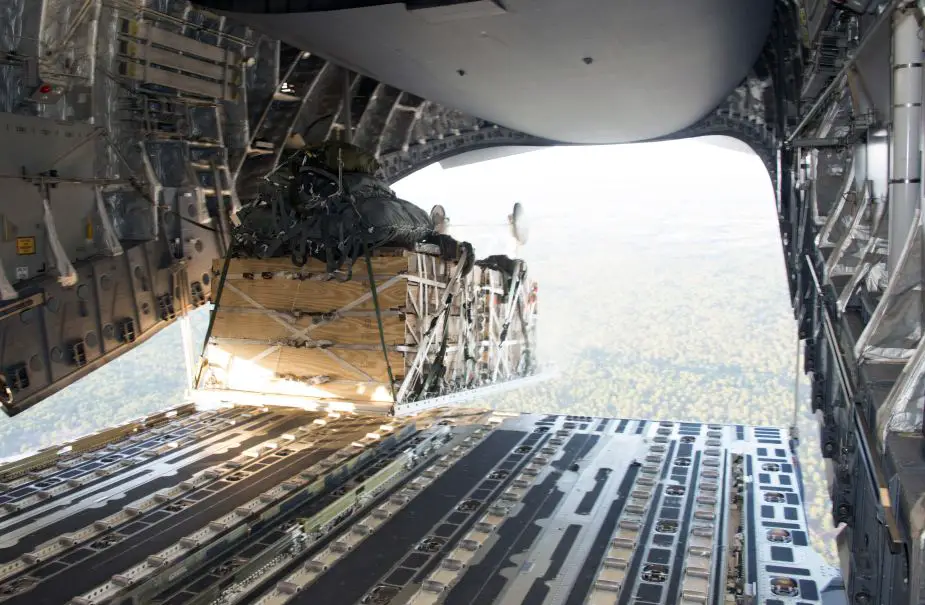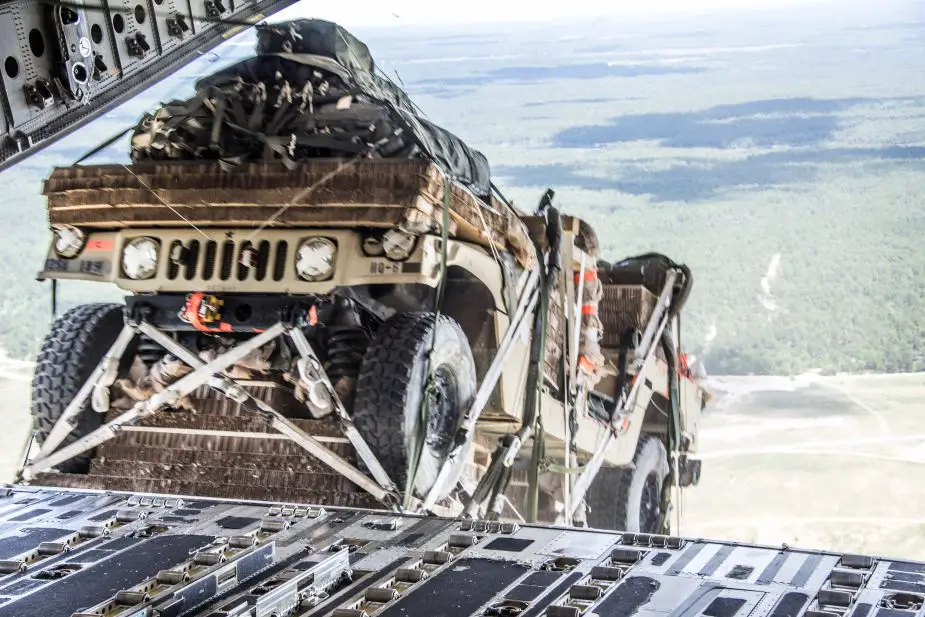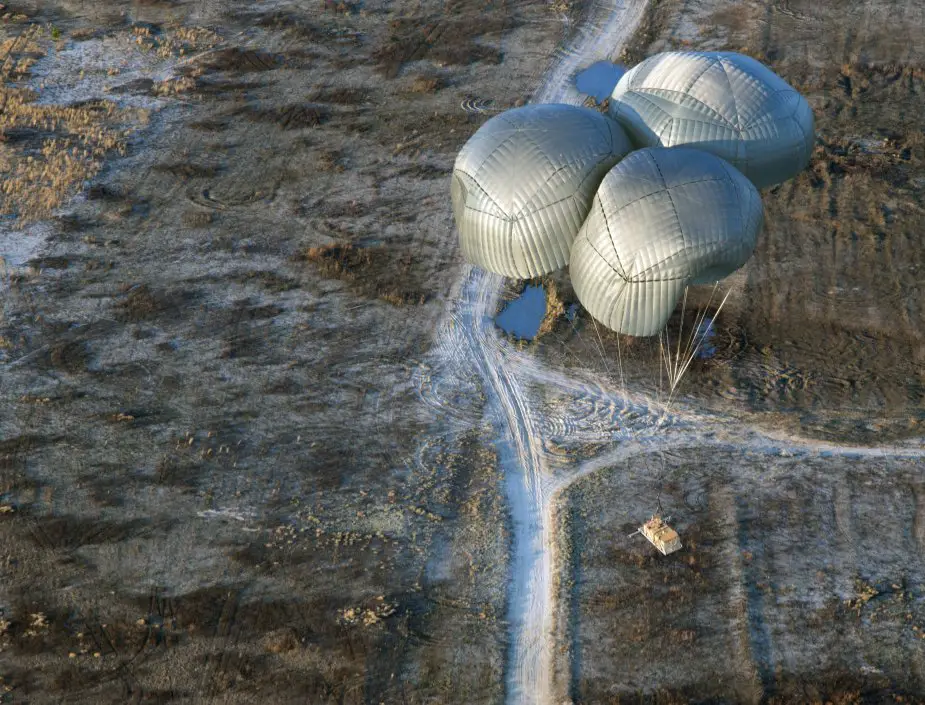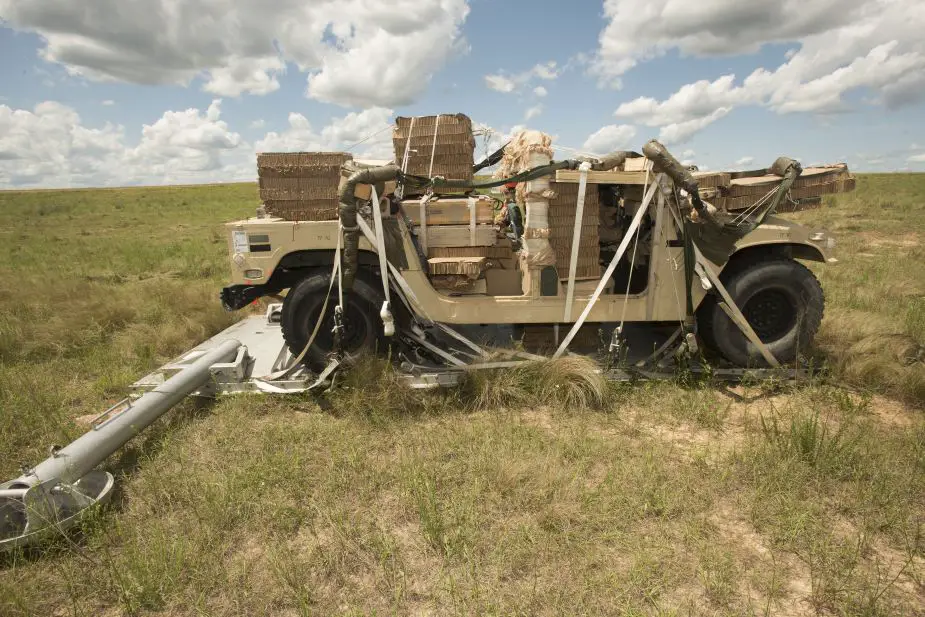New U.S. parachute system for low altitude airdrops tested at Fort Bragg
82nd Airborne Division soldiers tested a parachute system that allows the delivery of military equipment and mass supply loads at lower altitudes during tactical airdrop operations. Wayne Lovely, U.S. Army Operational Test Command Public Affairs, reports.

An Advanced Low Velocity Airdrop System -- Dual Row Airdrop System - ALVADS-DRAS - Mass Supply Load is airdropped using gravity release method during the Advanced Low Velocity Airdrop System -- Dual Row Airdrop System - ALVADS-DRAS - Follow-on Test and Evaluation (FOT&E) from a U.S. Air Force C-17 aircraft. (Picture source: U.S. Army Operational Test Command)
Soldiers from 151st Quartermaster Company, 11th Quartermaster Company and 82nd Financial Management Support Unit, 82nd Sustainment Brigade, 82nd Airborne Division, worked with the new Advanced Low-Velocity Airdrop System-Dual Row Airdrop System (ALVADS-DRAS). "It is a great opportunity to be part of operational testing and to see new equipment that is the future of heavy parachutes in the rigger field," said Spc. Nicholas Rowan, 151st Quartermaster Company.

An M997 High Mobility Multipurpose Wheeled Vehicle (HMMWV) is airdropped using gravity release method during the Advanced Low-Velocity Airdrop System -- Dual Row Airdrop System - ALVADS-DRAS - Follow-on Test and Evaluation (FOT&E) from a U.S. Air Force C-17 aircraft. (Picture source: Christopher OLeary)
The G-16 cargo parachute will allow for units to airdrop at a lower altitude and reduce the number of parachutes required for dual row airdrop system airdrop loads. It also reduces the number of parachutes required while minimizing recovery time. "The G-16 cargo parachute will provide expeditionary delivery of military equipment and supplies which in return allows operational units to perform speedy recovery before their follow-on mission," said Sgt. 1st Class Juan Cruz, ALVADS-DRAS Test Noncommissioned Officer, with the U.S. Army Operational Test Command's Airborne and Special Operations Test Directorate.

An Advanced Low-Velocity Airdrop System -- Dual Row Airdrop System - ALVADS-DRAS - Mass Supply Load lands on Holland Drop Zone, Fort Bragg, N.C. during operational testing. (Picture source: Christopher OLeary)
The Airborne and Special Operations Test Directorate (ABNSOTD) at Fort Bragg, North Carolina -- whose lineage traces directly back to the original Parachute Test Platoon of 1940 -- is home to the U.S. Army's only operational test paratroopers, who conduct operational testing for joint airborne contingency and Special Operations Forces in support of the acquisition decision-making process. To provide airdrop certification of all airborne and airdropped equipment, ABNSOTD plans, executes and reports on its operational tests and field experiments, which impacts doctrine, training, organization, and materiel.

An M997 High Mobility Multipurpose Wheeled Vehicle (HMMWV) on the drop zone after a successful Advanced Low-Velocity Airdrop System -- Dual Row Airdrop System - ALVADS-DRAS - airdrop from a U.S. Air Force C-17 aircraft. (Picture source: Jim Finney)


























